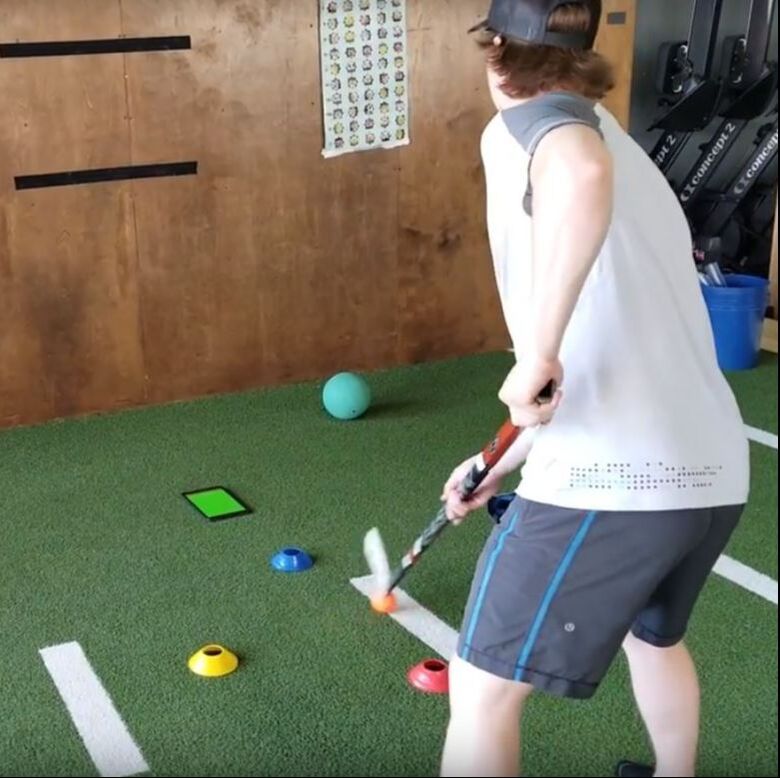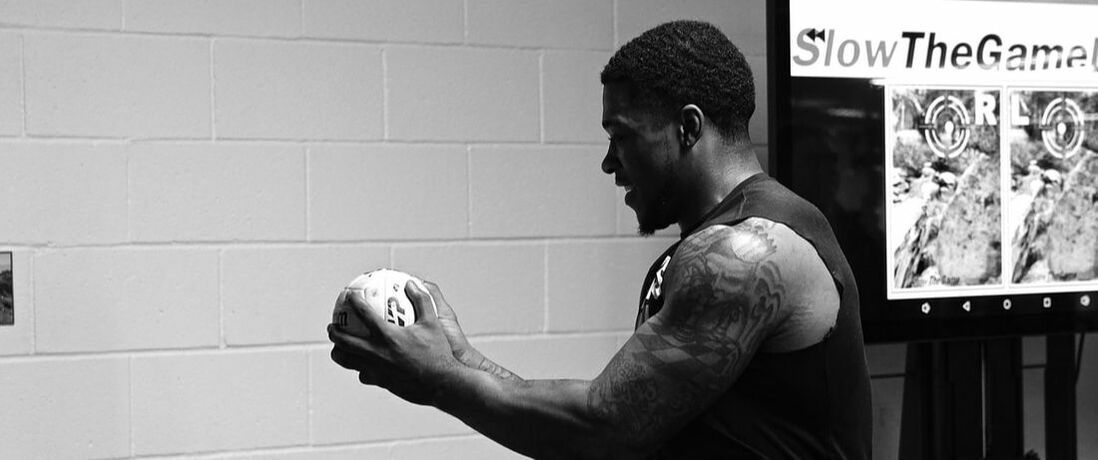First published in OPTIK February-March 2019EYE-MIND-BODY SPEED  RYAN HARRISON IS THE DIRECTOR OF VISUAL PERFORMANCE AT SLOWTHEGAMEDOWN/ NEURODYNAMIC VISION RYAN HARRISON IS THE DIRECTOR OF VISUAL PERFORMANCE AT SLOWTHEGAMEDOWN/ NEURODYNAMIC VISION Every time you see athletes in any sport do incredible things and wonder, “How did they do that,” it involves an amazing successful coordination of sensorimotor skills. The same is true when athletes struggle and make mistakes—this time there is a breakdown in the sensorimotor skills. The best athletes recognize patterns no one else sees, whether it’s a tennis player tracking the path of a 225 km/h serve, a racecar driver weaving through the bumper- to-bumper grind of the Daytona 500, or a hockey player skating at 32 km/h and backhanding a no-look pass to a teammate across the ice. It is what basketball players see in the open floor, and what star hitters in baseball recognize from the batter’s box. These athletes possess highly developed, highly integrated eye-mind-body speed (EMB Speed). This desirable level of EMB Speed is often influenced by their coordination of a powerful pyramid consisting of several key layers. Think of this as a pyramid of athleticism. The base of the pyramid is the foundation of the athlete. This is the musculoskeletal system. The musculoskeletal system is important to the success of the athlete and dependent on the fitness of an athlete, but without the mind and the visual system it is simply a rock. The middle layer is cognitive. This layer is influenced by mental skills, mental toughness and mindfulness. The athlete must have the desire to accomplish the task. The peak of the pyramid is the sensory layer. This is the input of information from our environment that tells us how to perform. In most sports this sensory input begins with the visual system. This is the input of information from our environment that tells us how to perform. In most sports this sensory input begins with the visual system. So how do athletes control this desirable sensorimotor interaction? Those that possess great EMB Speed and control see their game in large chunks, and it all appears in slow motion. These athletes see order in chaos. They can see slight information and process at a higher rate. More than foot speed or strength or nerve, phenomenal athletic performances require the kind of neural speed and control that blurs the line between thought and action. Those without these skills see the game like a blur, miss important visual cues and are often late to react as they make more mistakes. Put simply, an athlete with great EMB Speed and Control sees the game at a higher level and performs actions without delay or thought. This is what we’re seeing when we can’t believe our eyes. Our approach to performance vision involves finding the most practical, accessible and affordable way to integrate into athletic action. Evaluation and training the eyes to access the visual centers in the brain has clearly demonstrated an effective way to increase the speed and control the body to act and react. EMB Speed is not about visual acuity but can be affected by poor visual acuity. EMB Speed is more about the ability to discern and process the most import visual cues to an action and react with accuracy without much thought. When evaluating an athlete for EMB Speed we will evaluate clarity, ocular motor control, post-concussion syndrome, balance, and speed of processing. When training EMB Speed and Control we focus on decision making, moment integration, speed of processing and fine focus acquisition. Today’s competitive environment requires precision in data input and processing for a performance edge that separates the good from the great. EMB is another neurodynamic vision tool that offers an effective way to combine physical movement with sensory-cognitive decision-making to unleash maximum athletic potential. Bill Harrison, OD, is a sports vision specialist and author with 45 years of experience and the founder of SlowTheGameDown, which provides performance vision training for athletes. The clients he has worked with include the Toronto Blue Jays and San Francisco Giants.
2 Comments
|
Company |
|
© COPYRIGHT 2024. ALL RIGHTS RESERVED.





 RSS Feed
RSS Feed